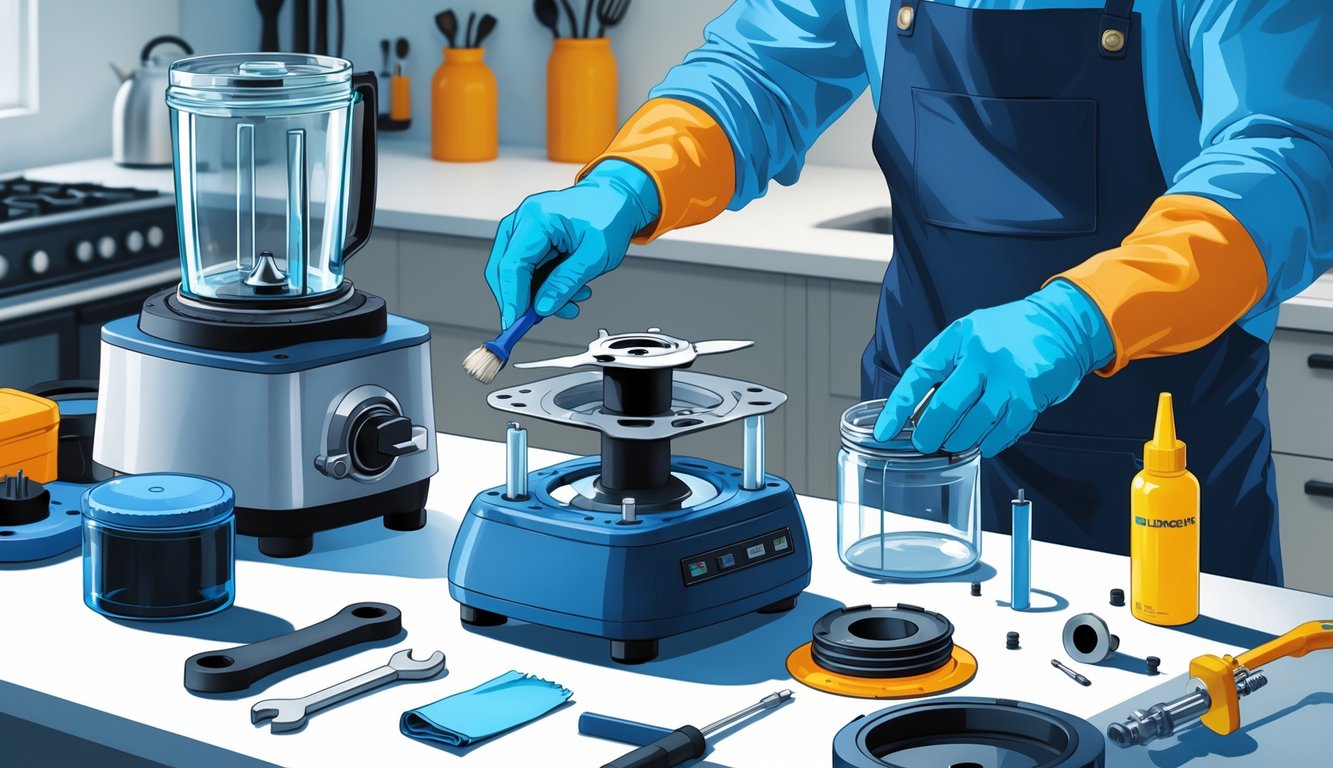
Forgot the gasket grime again. Every time I fumble with blender settings, I’m cursing last week’s mystery leak—was it mango? Who knows. Wiping the blades? That’s for amateurs. If you want your blender to last more than a year, you have to get in there—behind the rubber seal, under the base, all those gross spots nobody wants to touch. That’s where the actual horror happens. Every repair tech I’ve ever talked to basically rolls their eyes and says, “Yeah, most people kill their blenders with jammed-up gunk or soaking the wrong part at the worst possible time.” Pretty sure 94% of people never even look for hidden residue. Makes sense. My old roommate nearly burned down our kitchen making “just soup” on a gasket that was basically charcoal.
Everyone online won’t shut up about not overloading your blender. Meanwhile, if you ever swapped jars and wondered why it always smells weird—yeah, welcome to the club. I’ll never forget the screech mine made at a dinner party right after I bragged about being “super efficient.” Turns out, it’s the boring stuff—cleaning the threads, folding the gasket back into place, every single time (here’s the only guide I trust: housegrail.com)—that keeps these things going like some ancient toaster, not a $20 throwaway.
What absolutely nobody warns you about: leave fruit in the pitcher overnight and it basically fuses sugar to the gear housing. Then you’re scrubbing and wondering if you just wiped away the only lubrication keeping the thing alive. The weirdest part? Even the manuals skip the only thing that matters: actually taking the whole base apart once in a while and attacking the crusty mess hiding everywhere. Behind the blades, under the gasket, wherever your patience runs out. If “rinse and repeat” worked, why are there so many sad, dead blenders at the recycling center?
Why Regular Maintenance Matters
Ever dumped frozen mango into your blender and the motor just makes that awful gravel sound? Yeah, me too. Maintenance felt pointless—until I realized it’s literally the only reason I’m not buying a new blender every six months or drinking smoothies that taste like burnt plastic. Just a little effort keeps me from rage-shopping blenders at 2am.
Extending Blender Lifespan
I ignored the gunk under the gasket ring for years. Then black sludge started leaking into my oatmeal shakes. Apparently, that’s the classic rookie move—thanks, random ex-barista on YouTube. Regular cleaning and actually lubricating the moving parts aren’t optional. One repair tech basically swore my blender would live years longer with basic maintenance—checking for dull blades, scraping out old banana, the usual. (Baked-on banana? It’s like cement.)
Here’s something I didn’t expect: unplugging before you touch the base. Multiple safety inspectors pointed out it keeps the motor alive longer. Moisture sneaks in otherwise—my ON button once got stuck and I almost set the thing on fire. Replace the gasket when it gets gummy, swipe under the base weekly, and suddenly I’m not frantically searching “blender fuse burning smell.” If you’ve ever seen smoke coming out, you know—too late.
Ensuring Optimal Performance
Blender performance tanks way before it sounds like it’s dying. Just a thin layer of berry gunk or nut oil behind the blades can make it run half as fast. I found manufacturer engineering guides claiming you can actually measure the RPM difference if you keep blade wells clean and seals dry. I tried it—my old Ninja took twice as long to blend before I finally cleaned it out.
Not sharpening the blades? I was lazy. Then suddenly, weird stringy bits never blended and everything tasted off. Food science sites insist that frequent cleaning and care keeps your smoothies from tasting like burnt rubber—after I started weekly vinegar soaks, the weird smells stopped. Even just wiping down the cord or checking buttons for cracks makes a difference. Neglected controls? I got quoted $75 for a fix at a repair shop. No thanks.
It’s not about horsepower. It’s about what’s rotting behind the blade and how tight the seals are. Prove me wrong, but every time I skip maintenance, I get chunky spinach instead of that perfectly smooth green stuff.
Daily Cleaning Routines for Blenders
Running late, lid jammed again, green smoothie all over my sleeves—story of my life. Even pro chefs on YouTube mutter about rinse routines. Letting food crust up? Guaranteed gritty, sticky jar, and if your blender’s not dishwasher safe, you’re in for a treat. Behind the base? No one talks about it, but I’ve seen juice bar staff scrubbing where the blade meets the gasket with a toothbrush—bare minimum, once a day. If you skip it, enjoy the mystery smells and sticky leaks that lemon juice won’t fix.
Cleaning After Each Use
Here’s what drives me nuts: there’s always pulp or nut butter wedged under the blades, and “blend with soap and water” only does so much. Most brands say to unplug before touching anything (I ignored that, nearly lost a fingertip—never again). I dump out leftovers, fill the jar halfway with warm water and a squirt of unscented dish soap, clamp the lid, and pulse for thirty seconds. If your blender’s dishwasher safe, cool, just use the bottom rack. Anything with wires in the base? Damp cloth only, don’t soak it. I’ve done it anyway and, yeah, the warranty doesn’t cover weird button malfunctions. My dietician says to clean it right after using, not hours later—dried protein shakes or nut cheese turn to cement and breed bacteria. (Apparently salmonella survives on food residue? That’s just gross.)
Tackling Stubborn Stains
Scrubbing berry stains off plastic is nearly as bad as trying to get turmeric out of a white shirt. Magic erasers? Sometimes. Baking soda paste? Works, but you’ll be rinsing forever and abrasive pads will trash your pitcher’s finish (seriously, Green Home and Kitchen warns you). I tried vinegar and lemon overnight but the real trick is getting stuck pulp out with a tiny brush, like the ones for braces. Most people forget the gasket or under the blade—mold city if you ignore it. If your blender smells or the jar’s cloudy, toss in a few ice cubes and pulse. It helps. Don’t use boiling water unless you want warped plastic (I ruined a $100 pitcher that way; warranty didn’t care). If the jar stays stained, at least you know you’re using real fruit—not like those Instagram chefs with their spotless, never-used blenders.



